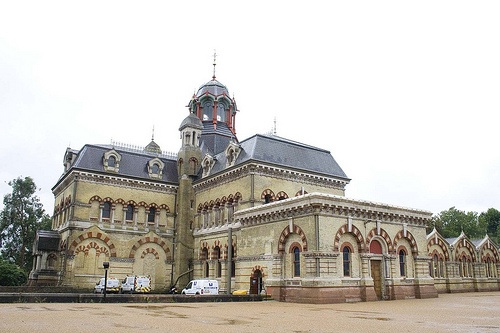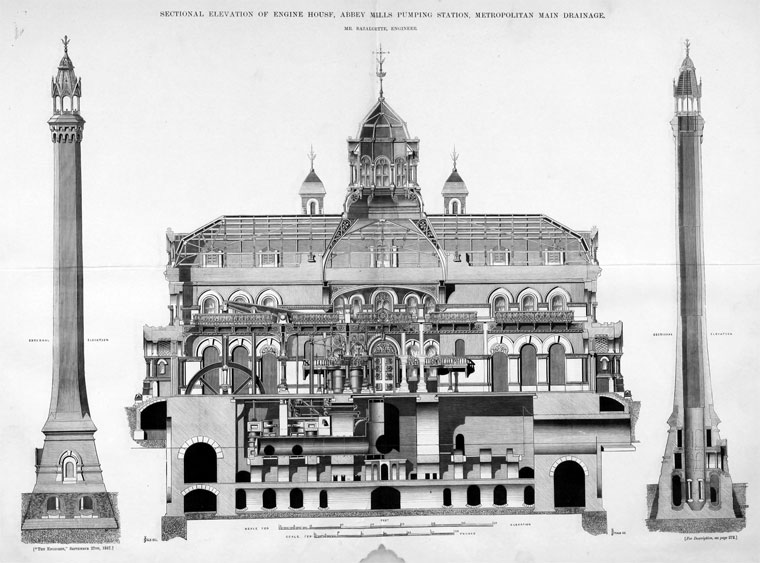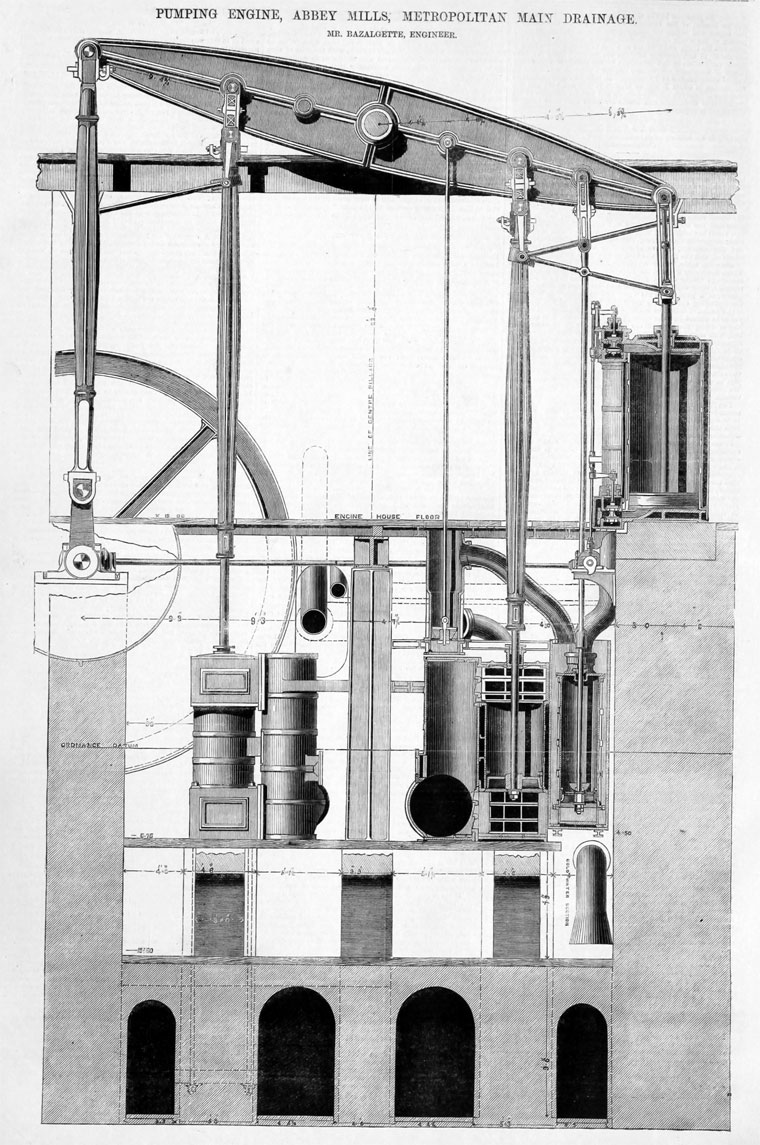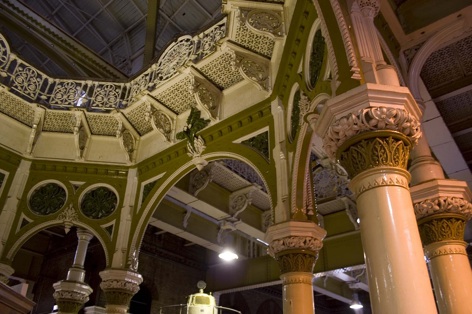We East London commuters are a blasé lot. Travelling past the Olympic Park at Stratford doesn’t even merit a glance out of the train windows these days. But one nearby structure still has the power to draw the eye: an ornate Orientalist cupola seemingly floating above the flat estuary landscape atop an elegant building which climbs in tiers like a masonry and iron wedding cake.

This fantasia hides a prosaic purpose: it’s the Abbey Mills Pumping Station, an integral part of London’s sewerage system, part of one of Victorian England’s emblematic and heroic engineering projects. Joseph Bazelgette’s great London sewers changed the face of the Capital, embanking the Thames and preventing raw sewage from being pumped into the river in the centre of the city, banishing the pestilential ‘Great Stink’ which had sent Londoners fleeing to the countryside and prevented Parliament from sitting. Abbey Mills and its partner south of the river at Crossness (which is being restored by enthusiasts, as we have detailed in The Engineer) provided the power to lift the sewage so that it could be pumped into new outfalls downriver of London.
Naturally, our predecessors were on the scene, and no less than Bazalgette himself provided details of Abbey Mills’ construction to the journal. The writer lavished almost as many superlatives upon the project as there were bacteria in the water, explaining that the station’s eight pumping engines and 16 double-acting double-acting piston pumps would lift the sewage by about 36 feet into three parallel sewers, discharging into a 9.5-acre, 16.5ft deep reservoir and thence into Barking creek. To this day, flushing something down the loo in East London is known as ‘sending it to Barking.’

The article explains the machinery to be installed in the station in great detail, noting that the engines ‘will be made to the most construction and design and will be perfectly balanced both in and out of action’. Even the leather for the valve seals comes in for praise, being ‘of the best description of hide 1/4in thick, which will have laid in the tanpit for two years.’
The safety margins for the engines is also described — an important part of the design of the project, with every part of the system oversized for the scale needed at the time to cope with Bazalgette’s projected rise in London’s population. ‘The materials, workmanship and finish of the said engines and other works will respectively be the best of their kind,’ it says, ‘and no part of the engines will be of less strength than is equivalent to at least ten times the maximum pressure (estimated at 35 tons) of the steam on the piston.’

The sheer ornateness of the designs also caught the reporter’s eye. ‘It would not be easy to do justice to the elaborately ornate character of the design as a whole,’ he says. ‘The design of the engine and boiler, the chimney stalk and, in fact, of every portion of the whole structure, does infinite credit to Mr Bazelgette and his staff; while we are at a loss to detect a single feature calculated to unnecessarily increase the outlay. Until we have placed our readers in full possession of the details of this dainty palance of machinery — if we may use the words — it would not be well to speak further of its merits.’ It says a lot about Victorian engineering that all the fancy cuclicues of cast iron weren’t seen as an unnecessary expense.

The article conclude by bemoaning the out-of-the-way location of the station, saying that it will not get the attention it deserves, and that North London will feel its effects on health much more than appreciating it as an example of ‘high art in engineering.’ Both Bazalgette and the Engineer’s reporter might be pleased to know that this isn’t the case. Abbey Mills is still in service and, although the steam engines and pumps have been replaced with modern machinery, the amazing ironwork is still there and can be seen when the station opens to the public on the annual London Open House weekend in September — although London blogger and Engineer aquaintance IanVisits complained last year that the all-over green paintjob ‘hides the detail in a sea of pea-green’.





Glasgow trial explores AR cues for autonomous road safety
They've ploughed into a few vulnerable road users in the past. Making that less likely will make it spectacularly easy to stop the traffic for...